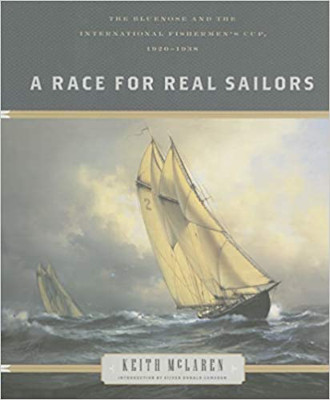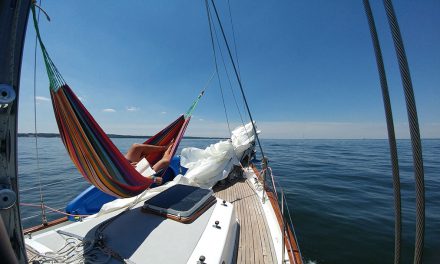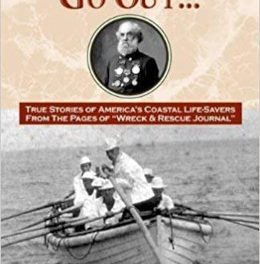
By the early 1900s the U.S. and Canadian Grand Banks fishing schooners were among the last all-sail commercial fleets left in the western world. The lives of these fishermen were hard, cold, and dangerous. But these were hard, rough men, and they sailed their boats that way. Whenever two boats met, while going to or from the fishing grounds, it turned into an impromptu race. Gale-force winds were common occurrences in the North Atlantic, and racing in 30- to 40-knot winds simply added more fun and excitement for these guys as they bent on every inch of canvas they could.
In July 1920, the British (Shamrock IV) and Americans (Resolute) faced off for the America’s Cup. With the races tied 2 to 2, the fifth and final race was met with great excitement and expectation by watchers and racers alike. The race committee caused a great uproar by postponing the final race due to 20-knot winds. (The last race was held two days later to little fanfare.)
“Old salts and fishermen . . . want to see a real race — not a lady-like saunter of fair-weather freaks” read an article in the Halifax Herald. And from this ensuing hue and cry was born the International Fishermen’s Cup, “a race for real sailors” that promised the excitement and drama the America’s Cup race lacked.
The precursor race was held off Halifax, Nova Scotia, on October 1, 1920, with nine Canadian boats racing. It was such a huge hit that the race committee issued a challenge to the Americans for a one-on-one race to be held October 30, 1920. The American schooner, Esperanto, set sails against Nova Scotia’s Delawana, and the first IFC went to the Americans.
The Canadian schooner, Bluenose, was launched March 26, 1921. The boat was so-named because the people of Nova Scotia were known on the East Coast as “bluenosers.” She was purpose-built to beat the Americans, and she dominated the races. This was a legendary series of races, especially in Canada, where a likeness of the Bluenose graces the back of the Canadian dime.
A Race for Real Sailors bills itself as a “fair and even-handed account” of this often contentious and often canceled race, and it lives up to that claim. This is an oversized coffee-table style book, liberally illustrated throughout with black-and-white photos, as well as a helpful glossary, maps, and appendix.
For anyone interested in the evolution, working and racing of the Grand Banks fishing schooners, this book is packed with all the information you could want. But if your interest is in light, entertaining sailing adventure stories, you should look elsewhere.
A Race for Real Sailors: Bluenose and the International Fishermen’s Cup, 1920-1938 by Keith McLaren (David R. Godine Publisher, 2006; 250 pages)




